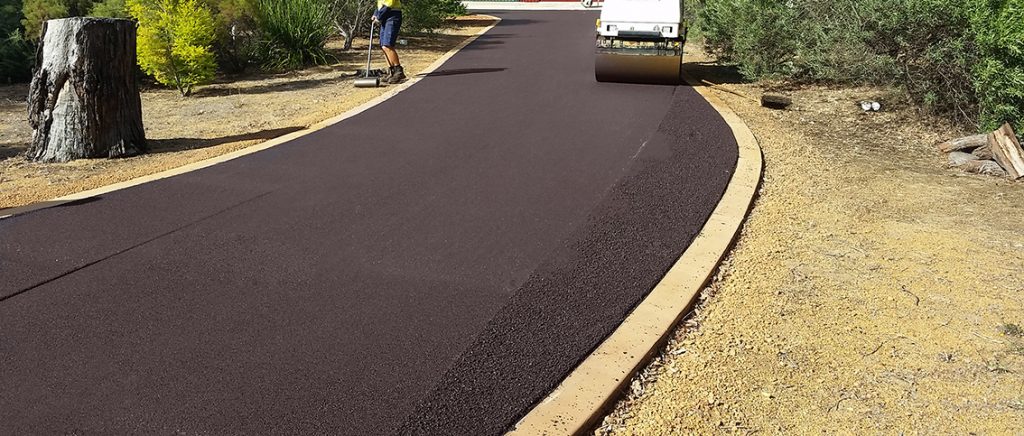Boost Property Worth and Performance with Hot Mix Asphalt Paving Solutions
Boost Property Worth and Performance with Hot Mix Asphalt Paving Solutions
Blog Article
Unlocking the Tricks of Hot Mix Asphalt Technology
Exploring the midsts of hot mix asphalt innovation uncovers a world where accurate solutions and careful procedures assemble to shape our roads and framework. The fusion of fillers, accumulations, and binders isn't just a building and construction task however a tactical orchestration of toughness and performance.
Significance of Hot Mix Asphalt
Hot Mix Asphalt plays a critical role in modern infrastructure advancement due to its durability and cost-effectiveness. As the most typically utilized leading product for roadways, freeways, and vehicle parking whole lots, Warm Mix Asphalt provides a variety of advantages that contribute to its value in construction projects.
The durability of Warm Mix Asphalt stems from its composition, which consists of accumulations, binder, and filler materials that are very carefully chosen and mixed to meet specific efficiency demands. This exact combination results in a strong and adaptable sidewalk that can endure frequent usage without significant deterioration. In Addition, Hot Mix Asphalt is 100% recyclable, additional enhancing its sustainability and environmental benefits. In general, the importance of Warm Mix Asphalt in facilities growth can not be understated, as it proceeds to be a foundation of modern-day construction practices.
Parts of Asphalt Mixes
The structure of asphalt mixes includes carefully picked accumulations, binder, and filler materials that are critical for accomplishing specific efficiency needs. Aggregates are the primary element of asphalt blends, supplying stamina and security. These accumulations can be all-natural, such as crushed rock or crushed stone, or artificial, like recycled materials from old pavements. The binder, commonly asphalt or asphalt concrete, holds the aggregates together and provides versatility and resilience to the mix. The selection of the binder is vital as it straight influences the mix's efficiency in various climate condition. Fillers, such as moisturized lime or Rose city cement, are utilized to enhance the mix's workability and aging resistance. Angled Parking.
The combination and proportion of these parts play a significant function in establishing the quality and performance of the asphalt mix. Designers carefully develop the mix to satisfy particular requirements, thinking about factors like website traffic volume, climate conditions, and pavement life expectancy. Appropriate selection and balancing of aggregates, binder, and fillers are essential for creating resilient, lasting asphalt sidewalks.
Mixing and Production Techniques

As soon as the aggregates are picked, the binder, usually asphalt cement, is added to bind the products together. The binder's high quality and amount significantly affect the mix's resistance, versatility, and strength to environmental aspects. Furthermore, fillers like hydrated lime or Portland cement might be incorporated to enhance certain features of the asphalt mix, such as its workability or wetness resistance.
During production, the accumulations and binder are heated up, normally between 250-325 ° F(121-163 ° C ), to promote blending and make certain correct coating of the aggregates. The mixing procedure must be detailed to accomplish blog an uniform mixture that promotes the preferred efficiency attributes of the asphalt. Numerous strategies, such as batch mixing or drum mixing, are used to attain top notch and consistent asphalt mixes for building and construction projects.
Factors Influencing Asphalt Performance
Elements affecting asphalt efficiency encompass an array of variables that affect the toughness, durability, and overall top quality of asphalt sidewalks. One crucial element is the top quality of materials made use of in the asphalt mix.

Ecological conditions likewise affect asphalt efficiency. Temperature level variants, moisture infiltration, and web traffic loads can all impact the structural integrity of the pavement. Design considerations, such as pavement density and drain, are essential in ensuring the long-lasting efficiency of the asphalt sidewalk. By very carefully thinking about these factors, professionals and designers can optimize asphalt efficiency and enhance the life span of pavements.
Lasting Practices in Asphalt Modern Technology

In addition, the development of warm-mix asphalt (WMA) innovations has actually gotten traction recently. WMA permits the production and placement of asphalt blends at lower temperatures contrasted to standard hot-mix asphalt, resulting in reduced power consumption and greenhouse gas exhausts. The usage of permeable asphalt blends can assist alleviate stormwater runoff concerns by permitting water to penetrate with the sidewalk and right into the ground, promoting natural water filtration and recharge procedures. By applying these lasting practices, the asphalt market can contribute to constructing a much more durable and ecologically friendly framework network.
Final Thought
In directory verdict, warm mix asphalt technology plays a crucial function in contemporary framework growth as a result of its longevity and cost-effectiveness. By carefully stabilizing components, utilizing proper mixing methods, and taking into consideration numerous aspects, engineers can produce top notch asphalt mixes that endure rush hour loads and rough weather. Embracing sustainable practices, such as using warm-mix innovations and recycled materials, additionally improves the ecological kindness of asphalt technology.
Mixing and manufacturing techniques in hot mix asphalt innovation entail the specific combination and processing of accumulations, binder, and fillers to produce a high-performance and resilient asphalt mix.Elements influencing asphalt efficiency encompass a variety of variables that influence the durability, longevity, and general high quality of asphalt sidewalks. Sustainable methods in asphalt modern technology incorporate various efforts aimed at minimizing the ecological impact of asphalt production and paving procedures. By including reclaimed asphalt sidewalk (RAP) and recycled asphalt shingles (RAS) into brand-new asphalt blends, the sector can dramatically reduce the intake of raw products and energy, while also lowering landfill waste.
WMA permits for the manufacturing and placement of asphalt blends at lower temperature levels contrasted to typical hot-mix asphalt, resulting in reduced power consumption and greenhouse gas exhausts.
Report this page